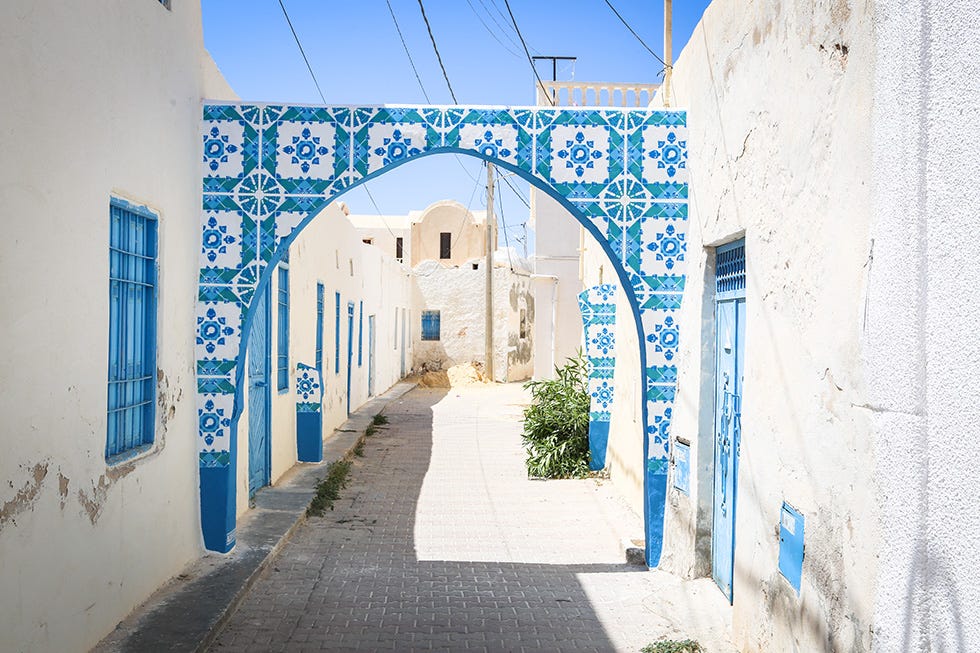Rabbit Hole Chronicles (Vol. I): Exploring the Artistic Abyss
From the depths of the art archives in the www, straight to your inbox
A note about this Rabbit Hole Chronicles.
Those who know me understand my insatiable appetite for consuming a vast array of content. This passion extends beyond mere consumption; I actively engage with the material through writing, sharing, and even encouraging friends and family to explore these discoveries with me.
In this spirit, I've conceived the Rabbit Hole Chronicles.
Picture this series as a journey through a specific 'rabbit hole'—a collection of fascinating snippets from various publications that have captured my imagination and sparked inspiration.
Unlike a traditional series bound by a singular theme, the Rabbit Hole Chronicles is more akin to a curated treasury from my bookmarks—an eclectic mix that doesn't conform to a specific genre or topic. It's an invitation to jump into a world of diverse ideas and narratives.
So, with that said, ’Oh dear! Oh dear! I shall be late!'
My grandma is a graffitter.
This is a unique initiative in Lisbon, Portugal, called LATA 65.
This urban art workshop teaches senior citizens the basics of street art, bridging the generation gap and challenging ageist stereotypes.
Over 100 seniors have participated, learning to create stencils and street tags.
These tags have appeared on murals across the city. The senior citizens, guided by well-known street artists, have been instrumental in adding vibrant colors to neglected and rundown neighborhoods.
Photos via Lata 65.
Transforming Er-Riadh: The Story of a Tunisian Village Becoming a Street Art Masterpiece
This is the transformation of Er-Riadh, a traditional village on the Tunisian island of Djerba.
This project was orchestrated by Parisian gallery owner Mehdi Ben Cheikh, who previously completed the Tour 13 project in Paris.
Over the summer, he invited 150 street artists from over 30 countries to paint murals on the village walls, with permission from the Tunisian Ministry of Tourism and the local mayor. Every homeowner in the village also consented to using their walls for this project.
The artists, working in shifts, not only transformed the village into a vibrant open-air museum but also engaged with the local community, sharing and learning about each other's cultures.

The project, named Djerbahood, has turned Er-Riadh into a tourist attraction, with locals expressing pride in the newfound attention their village is receiving.
They view this as a positive evolution, enhancing their home's cultural significance and visibility.
Nafir's Rebellion: Persian Rugs as Canvases for Urban Art Defying Iran's Censorship
The Iranian street artist Nafir, blends traditional Persian rug art with graffiti to make a statement against censorship in Iran.
Nafir, an autodidact artist from Tehran, started creating street art murals in 2008 with the aim of fighting against censorship and political issues in Iran.
His work, influenced by traditional Iranian art and culture, can be found worldwide, including in countries like Malaysia, Afghanistan, Italy, Germany, Norway, the Netherlands, Turkey, India, and Georgia.
The Iranian government has historically equated street art with satanism, deeming it both illegal and immoral.
Nafir initially drew inspiration from artists like Jef Aeresol, Blek le Rat, and Banksy, but a conversation with his father, a traditional carpet artisan, led him to combine traditional Persian rug art, calligraphy, and ceramics with graffiti.
Photos: Nafir, Instagram.
His artwork on carpets features themes of free love, homosexuality, and feminism, juxtaposing a traditionally accepted medium with censored topics.
Nafir's innovative art form is a direct challenge to Iranian censorship, blending traditional and contemporary art to express clear philosophical messages and to stand against cultural repression.
That's a wrap for today's journey. I'm eager to hear your thoughts on this format and would absolutely love your suggestions for future topics – just drop them in the comments. Remember, the collective wisdom of our art-loving community is a powerful tool.
In our next post, we'll dive into the fascinating idea that art isn't confined to the traditional 'white box' gallery and museum spaces. Prepare to discover how incredible, emotionally stirring, and rebelliously spirited art exists in the most unexpected places surrounding us daily.
Every stroke of the brush tells a story of rebellion. Until next time.
Like what you read? Feel free to share this post!
















Love these fine examples of art on the slight borders of rebellion. Hopefully, a starting point.